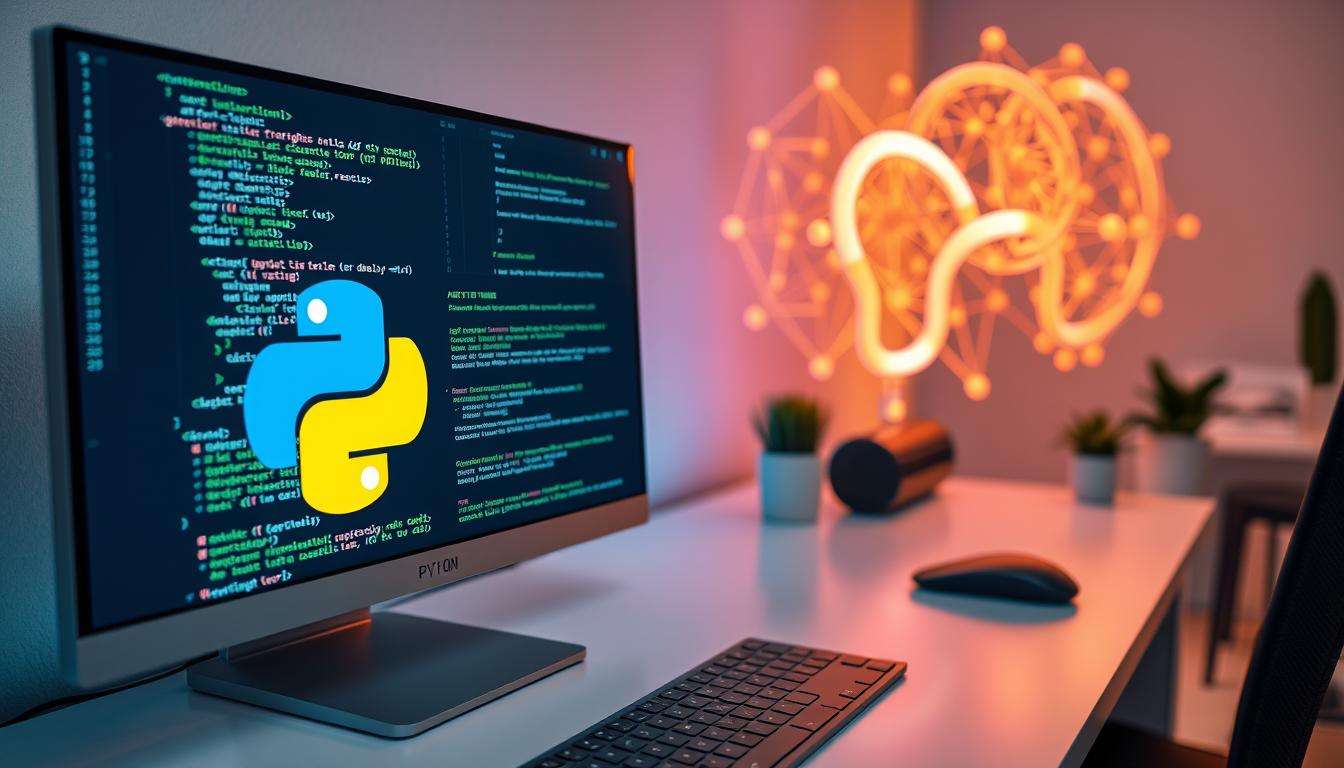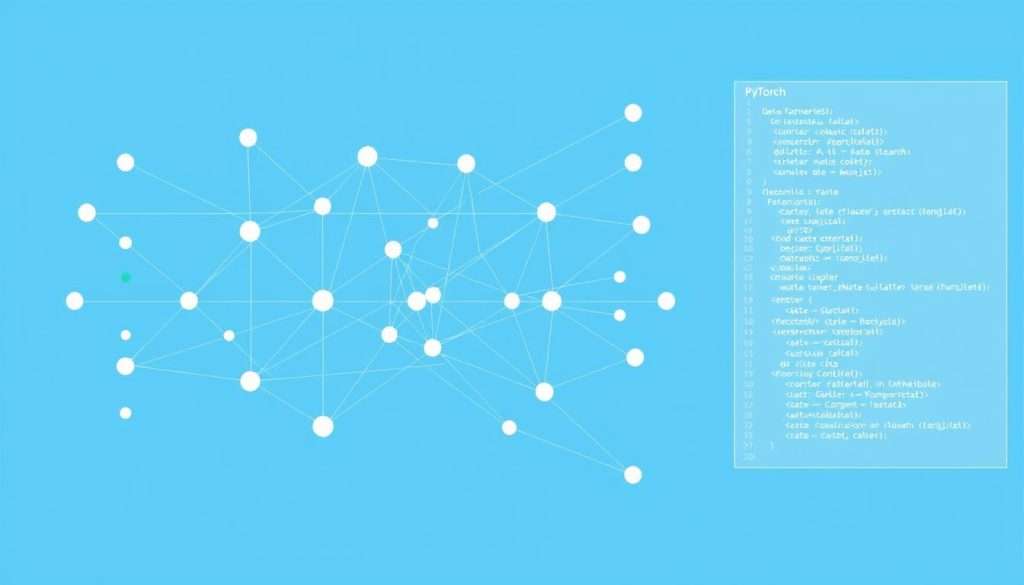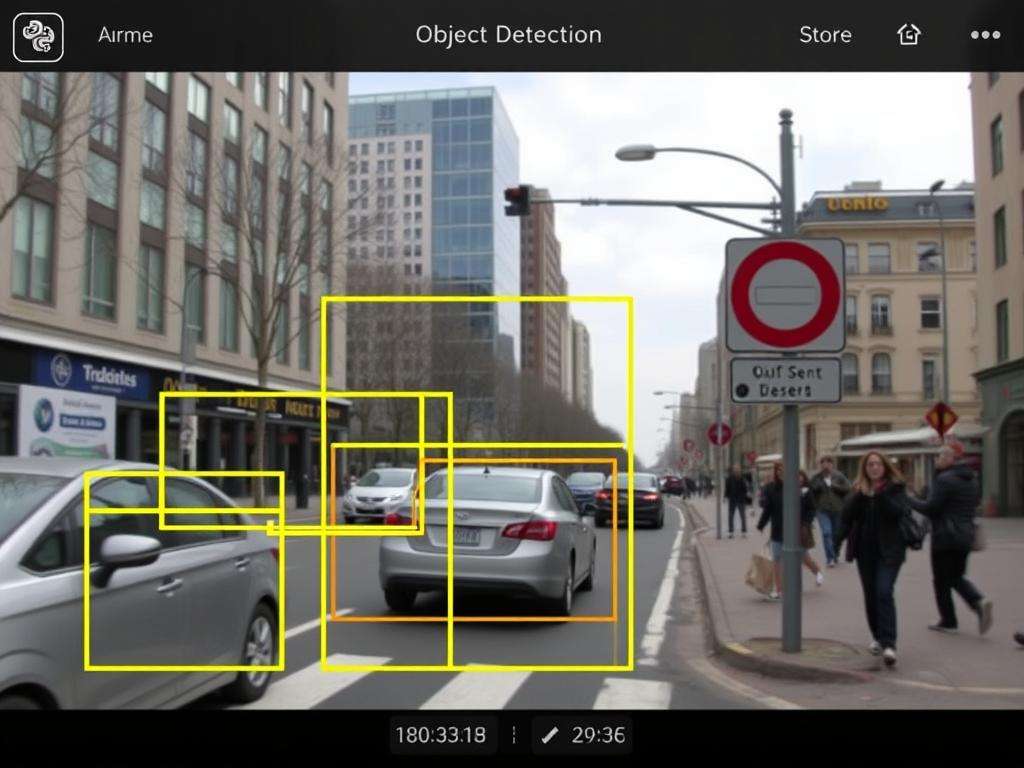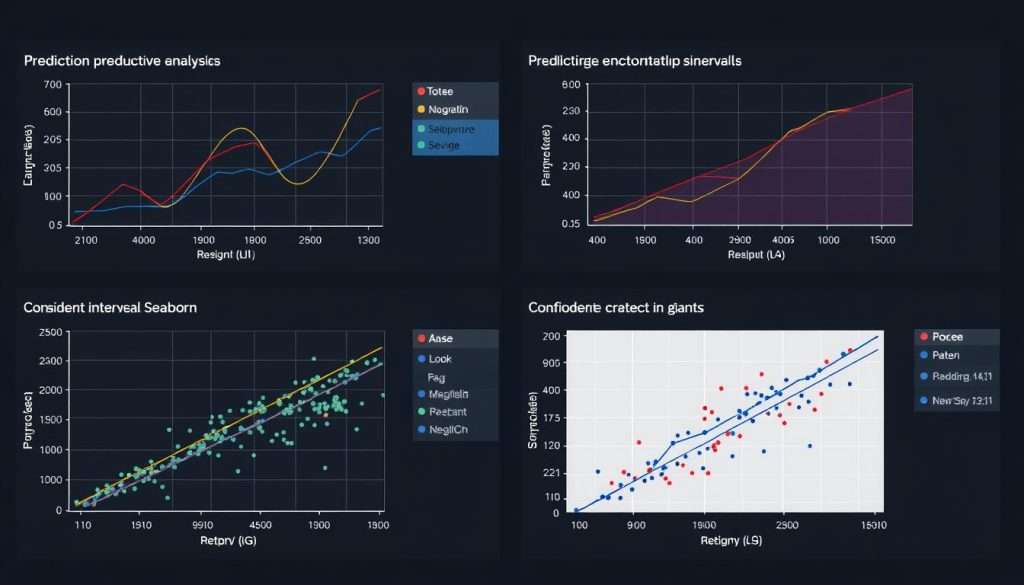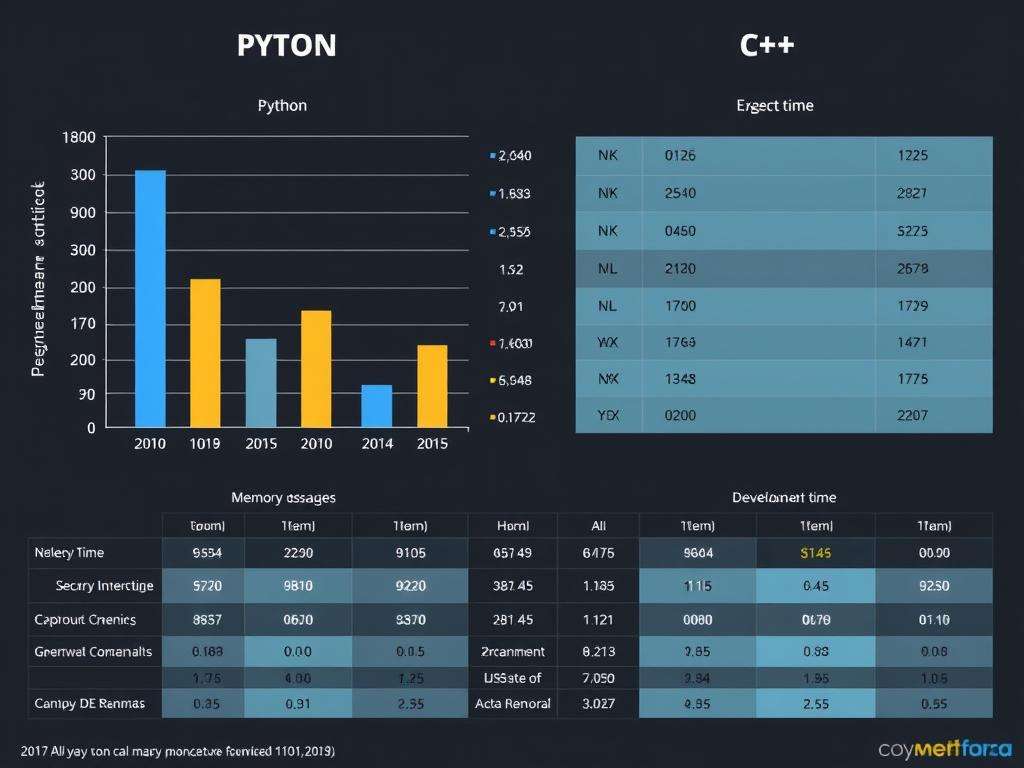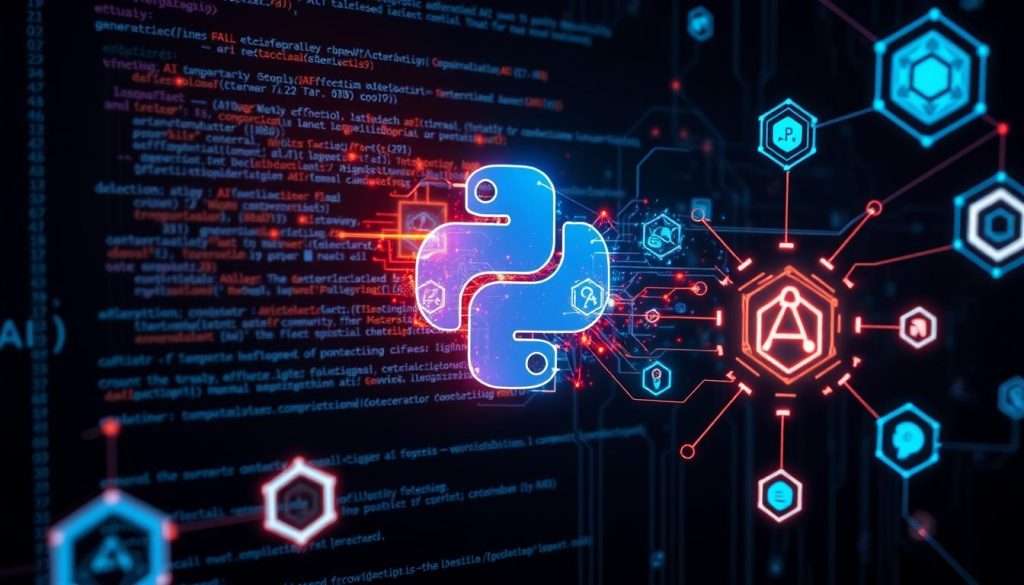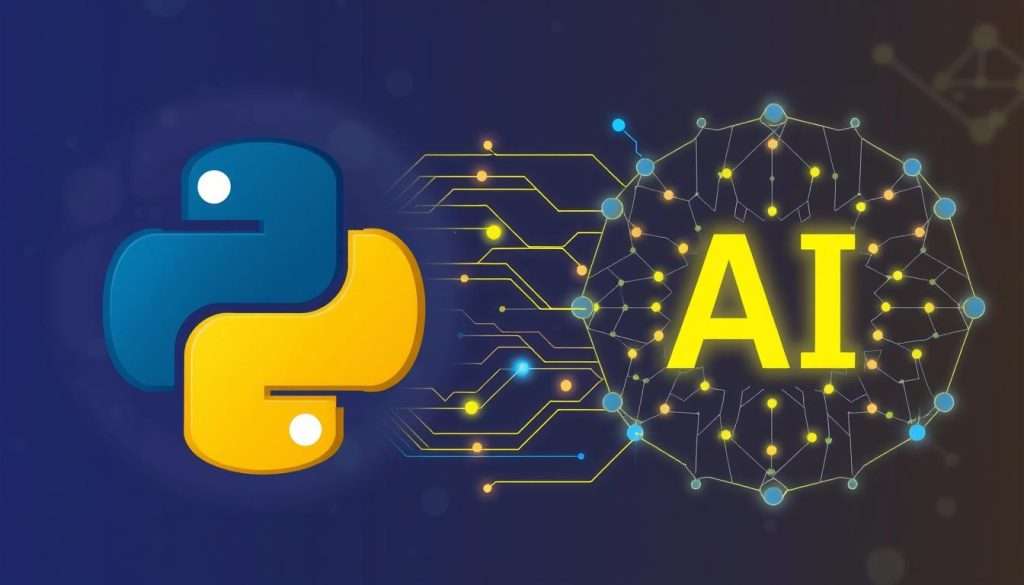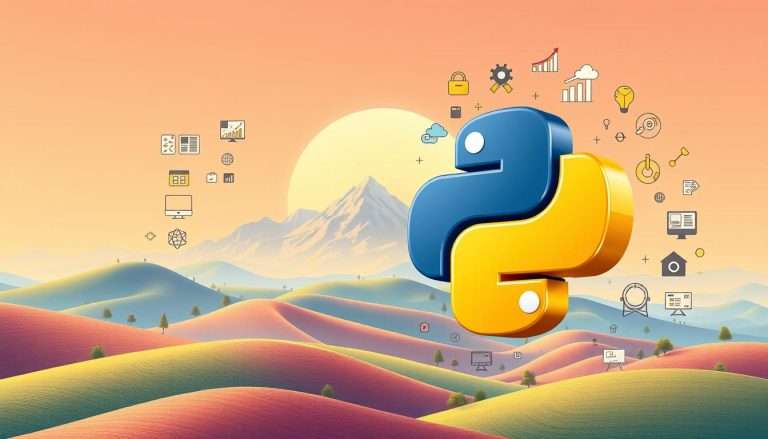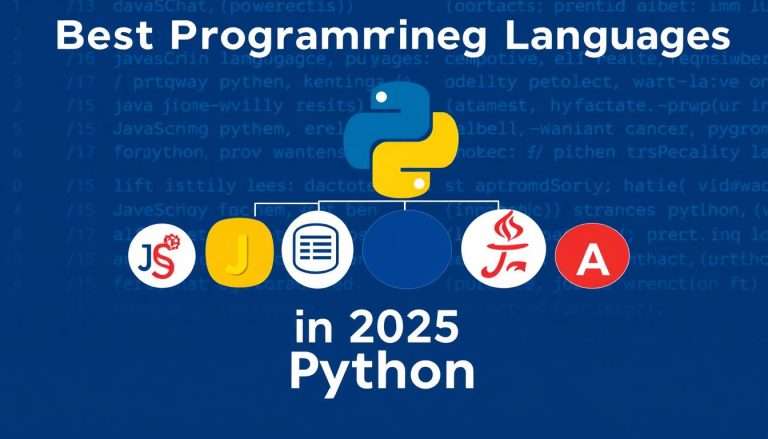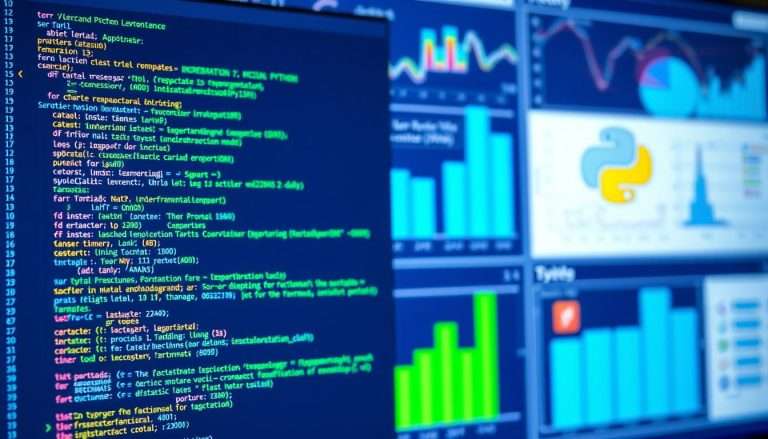Python and AI: A Synergistic Relationship in Modern Technology
In this comprehensive guide, we’ll explore why Python has become the go-to language for AI development, examine the essential libraries that make this possible, and look at real-world applications that demonstrate this powerful synergy in action.
Why Python Dominates AI Development
Python has emerged as the undisputed leader in AI development for several compelling reasons. Its combination of simplicity, versatility, and powerful libraries creates the perfect environment for both learning and implementing AI solutions.
Simplicity and Readability
Python’s clean, readable syntax makes it accessible to beginners while remaining powerful enough for experts. Unlike languages such as C++ or Java, Python reduces the cognitive load required to write and understand code, allowing developers to focus on solving AI problems rather than wrestling with complex syntax.
- Minimal use of special characters and brackets
- Whitespace indentation that enforces clean code structure
- English-like commands that are intuitive to understand
- Shorter development time compared to other languages
Extensive Library Ecosystem
Python’s rich ecosystem of libraries and frameworks specifically designed for AI and machine learning gives developers powerful tools without having to build everything from scratch. Think of these libraries as specialized LEGO sets – instead of building each brick individually, you get pre-made components designed to work together seamlessly.
Strong Community Support
The Python community is vast, active, and incredibly supportive. This means that developers working on AI projects can easily find solutions to common problems, share knowledge, and collaborate on improvements to existing tools.
Stack Overflow’s 2022 Developer Survey found that Python remains one of the most loved programming languages, with a particularly strong presence in data science and AI communities. This widespread adoption means more resources, tutorials, and peer support for anyone working with Python and AI.
Start Your Python AI Journey Today
Get our free Python & AI Starter Kit with code templates, library cheat sheets, and project ideas to jumpstart your learning.
Key Python Libraries for AI and Machine Learning
Python’s strength in AI development comes largely from its powerful libraries. These specialized tools handle everything from data manipulation to complex neural network implementation, saving developers countless hours of work.
Data Manipulation and Analysis
NumPy
NumPy forms the foundation of scientific computing in Python. It provides support for large, multi-dimensional arrays and matrices, along with a collection of mathematical functions to operate on these elements efficiently.
NumPy Code Example:
import numpy as np
# Create a simple neural network input
inputs = np.array([[0.1, 0.2, 0.3],
[0.4, 0.5, 0.6]])
# Create weights
weights = np.random.rand(3, 2)
# Perform matrix multiplication (forward pass)
output = np.dot(inputs, weights)
print(output)Pandas
Pandas excels at data manipulation and analysis. It provides data structures like DataFrames that make working with structured data intuitive and efficient – essential for preparing training data for AI models.
Pandas Code Example:
import pandas as pd
# Load dataset
data = pd.read_csv('ai_training_data.csv')
# Explore the data
print(data.head())
print(data.describe())
# Clean and prepare data for AI model
data = data.dropna() # Remove missing values
X = data.drop('target', axis=1) # Features
y = data['target'] # Target variableMachine Learning Libraries
Scikit-learn
Scikit-learn provides simple and efficient tools for data mining and data analysis. It’s built on NumPy, SciPy, and matplotlib, making it a perfect entry point for machine learning.
Scikit-learn Code Example:
from sklearn.model_selection import train_test_split
from sklearn.ensemble import RandomForestClassifier
from sklearn.metrics import accuracy_score
# Split data into training and testing sets
X_train, X_test, y_train, y_test = train_test_split(
X, y, test_size=0.2, random_state=42)
# Create and train a model
model = RandomForestClassifier()
model.fit(X_train, y_train)
# Make predictions and evaluate
predictions = model.predict(X_test)
accuracy = accuracy_score(y_test, predictions)
print(f"Model accuracy: {accuracy:.2f}")Deep Learning Frameworks
| Library | Primary Focus | Learning Curve | Best For | Key Features |
| TensorFlow | Production & Research | Moderate | Large-scale deployments | TensorBoard visualization, TF Serving, mobile support |
| PyTorch | Research & Prototyping | Moderate | Research projects, rapid iteration | Dynamic computation graph, intuitive debugging |
| Keras | Rapid Prototyping | Low | Beginners, quick model building | High-level API, works with multiple backends |
| JAX | High-Performance ML | High | Advanced research, performance-critical applications | Auto-differentiation, XLA compilation, GPU/TPU support |
TensorFlow & Keras
TensorFlow, developed by Google, is one of the most popular deep learning frameworks. Keras, which serves as TensorFlow’s high-level API, makes building neural networks more accessible with its user-friendly interface.
TensorFlow/Keras Code Example:
import tensorflow as tf
from tensorflow import keras
# Create a simple neural network
model = keras.Sequential([
keras.layers.Dense(128, activation='relu', input_shape=(784,)),
keras.layers.Dropout(0.2),
keras.layers.Dense(10, activation='softmax')
])
# Compile the model
model.compile(
optimizer='adam',
loss='sparse_categorical_crossentropy',
metrics=['accuracy']
)
# Train the model
model.fit(x_train, y_train, epochs=5)
test_loss, test_acc = model.evaluate(x_test, y_test)
print(f"Test accuracy: {test_acc}")PyTorch
PyTorch, developed by Facebook’s AI Research lab, has gained tremendous popularity among researchers for its flexibility and intuitive design. It uses a dynamic computation graph, making debugging and model development more intuitive.
PyTorch Code Example:
import torch
import torch.nn as nn
import torch.optim as optim
# Define a simple neural network
class SimpleNN(nn.Module):
def __init__(self):
super(SimpleNN, self).__init__()
self.fc1 = nn.Linear(784, 128)
self.relu = nn.ReLU()
self.dropout = nn.Dropout(0.2)
self.fc2 = nn.Linear(128, 10)
def forward(self, x):
x = self.fc1(x)
x = self.relu(x)
x = self.dropout(x)
x = self.fc2(x)
return x
# Create the model and define loss function and optimizer
model = SimpleNN()
criterion = nn.CrossEntropyLoss()
optimizer = optim.Adam(model.parameters(), lr=0.001)
# Training loop would go hereMaster Python AI Libraries
Join our free 7-day Python AI Mini-Course and learn how to use these powerful libraries through hands-on projects.
Real-World AI Applications Built with Python
Python’s AI capabilities extend far beyond academic exercises. Here are some compelling real-world applications where Python and AI work together to solve complex problems.
Natural Language Processing
Python powers many of today’s most sophisticated natural language processing (NLP) applications. Libraries like NLTK, spaCy, and Hugging Face’s Transformers have democratized access to advanced language models.
Chatbots and Virtual Assistants
From customer service bots to sophisticated virtual assistants like Siri and Alexa, Python-based NLP models enable machines to understand and respond to human language with increasing accuracy. These systems use techniques like sentiment analysis, intent recognition, and context management to create more natural interactions.
Simple Sentiment Analysis with Python:
from transformers import pipeline
# Initialize sentiment analysis pipeline
sentiment_analyzer = pipeline("sentiment-analysis")
# Analyze some text
result = sentiment_analyzer("I absolutely love how Python makes AI accessible!")
print(f"Sentiment: {result[0]['label']}, Score: {result[0]['score']:.4f}")Computer Vision
Python libraries like OpenCV, combined with deep learning frameworks, have revolutionized computer vision applications. These tools enable machines to “see” and interpret visual information from the world.
Object Detection and Recognition
From autonomous vehicles to medical imaging, Python-based computer vision systems can identify objects, detect patterns, and make decisions based on visual data. These applications use convolutional neural networks (CNNs) and other specialized architectures to process and understand images.
Recommendation Systems
The personalized recommendations you receive on platforms like Netflix, Spotify, and Amazon are powered by sophisticated AI algorithms, many built with Python. These systems analyze user behavior, preferences, and similarities between items to suggest content users might enjoy.
Collaborative filtering, content-based filtering, and hybrid approaches are all commonly implemented using Python libraries like Surprise, LightFM, and custom implementations with TensorFlow or PyTorch.
Predictive Analytics
From financial forecasting to healthcare diagnostics, Python-based predictive models help organizations make data-driven decisions. These applications combine statistical techniques with machine learning to identify patterns and predict future outcomes.
Time series analysis, regression models, and classification algorithms implemented in Python help businesses forecast sales, predict customer churn, optimize pricing strategies, and more.
Build Your Own AI Applications
Ready to create your own AI projects? Get our Python AI Project Ideas guide with 25 practical applications you can build today.
Python vs. Other Languages for AI Development
While Python dominates the AI landscape, other programming languages offer their own advantages for specific use cases. Understanding these differences can help you choose the right tool for your particular AI project.
Python vs. R
Python Advantages
- More general-purpose, better for production deployment
- Stronger in deep learning with TensorFlow, PyTorch
- Better integration with web services and applications
- Larger community and more comprehensive libraries
R Advantages
- Superior statistical analysis capabilities
- Better for academic and statistical research
- Excellent data visualization with ggplot2
- More specialized for biostatistics and bioinformatics
While R excels in statistical analysis and academic research, Python’s versatility and comprehensive AI ecosystem make it the preferred choice for most AI applications, especially those requiring integration with other systems or production deployment.
Python vs. Julia
Python Advantages
- Mature ecosystem with extensive libraries
- Larger community and more learning resources
- Better integration with existing systems
- More job opportunities and industry adoption
Julia Advantages
- Superior performance, approaching C/C++ speeds
- Better for mathematical and scientific computing
- Native support for parallel and distributed computing
- Designed specifically for numerical and scientific computing
Julia offers impressive performance for numerical computing, but Python’s mature ecosystem and widespread adoption make it the more practical choice for most AI projects, especially for teams without specialized high-performance computing needs.
Python vs. C++
Python Advantages
- Faster development time and easier prototyping
- More accessible for data scientists and researchers
- Rich ecosystem of AI and ML libraries
- Better readability and maintainability
C++ Advantages
- Superior performance and execution speed
- Better memory management and control
- More suitable for resource-constrained environments
- Better for real-time applications with strict latency requirements
C++ offers performance advantages for computationally intensive tasks and embedded systems, but Python’s ease of use and specialized AI libraries make it the preferred choice for most AI development, with C++ often used for optimizing specific performance-critical components.
Future Trends: Python’s Evolving Role in AI
As artificial intelligence continues to advance, Python’s role in the ecosystem is evolving to meet new challenges and opportunities. Here are some key trends shaping the future of Python in AI development.
Python in Generative AI
Generative AI models like GPT-4, DALL-E, and Stable Diffusion represent some of the most exciting developments in artificial intelligence. Python has been instrumental in making these technologies accessible to developers through libraries like Hugging Face Transformers, OpenAI’s Python SDK, and Stability AI’s tools.
As generative AI continues to advance, Python frameworks are evolving to make these powerful models more accessible, efficient, and customizable. This includes tools for fine-tuning large language models, optimizing inference performance, and integrating generative capabilities into applications.
Simple Text Generation with Python:
from transformers import pipeline
# Initialize text generation pipeline
generator = pipeline('text-generation', model='gpt2')
# Generate text
result = generator("Python is the perfect language for AI because",
max_length=50,
num_return_sequences=1)
print(result[0]['generated_text'])Ethical AI and Responsible Development
As AI systems become more powerful and widespread, ethical considerations and responsible development practices are increasingly important. Python is at the forefront of this movement, with libraries and frameworks specifically designed to address issues like bias, fairness, transparency, and explainability.
Libraries like AI Fairness 360, Captum, SHAP, and LIME provide tools for detecting and mitigating bias, explaining model decisions, and ensuring AI systems are developed and deployed responsibly. As regulatory frameworks around AI continue to evolve, these Python tools will become increasingly important for compliance and best practices.
Python’s Performance Optimization
One of the historical criticisms of Python has been its performance limitations compared to languages like C++ or Julia. However, the Python ecosystem is actively addressing these challenges through various approaches:
- Just-in-time (JIT) compilation with tools like Numba
- Optimized runtime environments like PyPy
- Improved integration with C/C++ through better binding tools
- GPU and TPU acceleration through specialized libraries
- Vectorization and parallel processing optimizations
These improvements are making Python increasingly viable for performance-critical AI applications, further cementing its position as the language of choice for AI development.
Integration with Edge Computing and IoT
As AI moves beyond cloud environments to edge devices and IoT systems, Python is adapting to meet the challenges of resource-constrained environments. Libraries like TensorFlow Lite, PyTorch Mobile, and MicroPython are enabling developers to deploy Python-based AI models on everything from smartphones to microcontrollers.
This trend is particularly important for applications like computer vision on mobile devices, predictive maintenance in industrial IoT, and smart home technologies, where local processing offers advantages in latency, privacy, and offline functionality.
Conclusion: The Enduring Python-AI Partnership
The synergistic relationship between Python and artificial intelligence has transformed both fields, making advanced AI techniques more accessible to developers while cementing Python’s position as the dominant language for cutting-edge technology.
Python’s simplicity, readability, and extensive library ecosystem make it the ideal language for AI development, from basic machine learning models to sophisticated deep learning systems. As AI continues to evolve, Python is evolving alongside it, addressing performance challenges, embracing new paradigms like generative AI, and incorporating tools for ethical and responsible development.
Whether you’re just beginning your journey into AI or you’re an experienced developer looking to leverage the latest techniques, Python provides the perfect foundation for exploring, building, and deploying artificial intelligence solutions in virtually any domain.
Take Your Python AI Skills to the Next Level
Ready to dive deeper? Get our comprehensive Python AI Learning Path with structured tutorials, projects, and resources for beginners to advanced developers.

